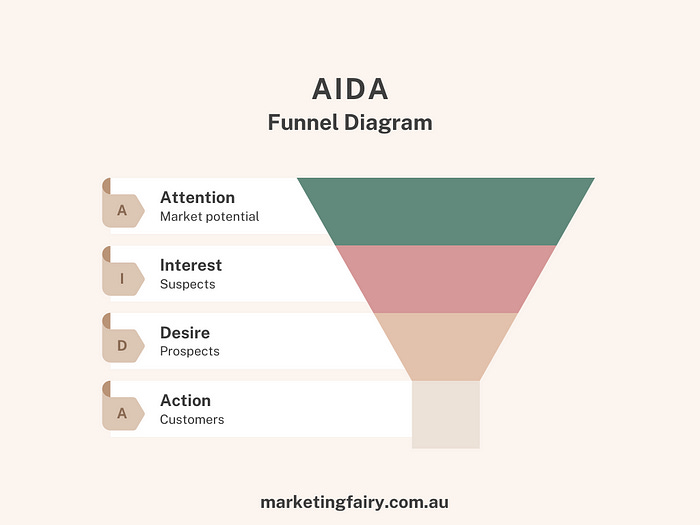8 Essential Tips to Drastically Improve Your Headlines
How to make your headlines “thumb stoppers”
When I started writing online, my headlines sucked big time, although I was an experienced journalist.
When you write a headline for a newspaper, it has to be informative and interesting. Nothing more. But, when you write a headline for a blog post, online article, or sales page, oh, boy, how many different things do you have to check before you press the “publish” button?
On average, five times as many people read the headline compared to the body copy.
-David Ogilvy
There are hundreds of different ways to make a great headline. I’ll focus on just some pillars you need to think about until you master this skill.
Here is how to turn your headlines into “thumb-stopper”:
1. Everything starts with attention
The ultimate goal of every good headline is attention (and the top of the AIDA marketing funnel as well). Specifically, attention from your desired audience. That’s how you start your marketing funnel (and in writing online, there is always a marketing funnel, isn’t it?)
Every reader will ask” What’s in there for me” before they click on the copy. Make them stop and click.
The first two words are the signal for our scanning eye, according to the Nielson Group.
2. The more specific, the better
The more specific you are, the more effectively you will target your audience. What headline is more specific and interesting to you (and if you’re a woman in her 40s, what would make you click on it?)
10 Tips to Lose Weight Fast
10 Proven Methods Will Help Women Over 40 to Shred Belly Fat Faster
Be aware: a good headline is still concise: Ideally, it should be no more than 10 to 12 words. SEO experts would say an SEO headline is just what search clients recognise: up to 6o characters.
3. Include a promise and a clear hook
Your readers need assurance that you’ll give them something useful when they click on the headline. Identify their pain and offer a solution. If you’re, selling cooling mattresses to women in menopause or hot sleepers, you write your promise straight in the headline:
Say Goodbye to Night Sweats with Our Cooling Mattress: The Ultimate Solution for Hot Sleepers!
Say Goodbye to Night Sweats with These 7 Simple Solutions — Sleep Cool and Comfortable All Night Long!
To summarise:
The easiest way to write hooks is to address your biggest customer objection.
Pain of losing is stronger than the promise of gaining.
4. Forget about “clickbait”
I’ll tell you a secret: It’s not enough just to promise something; you need to deliver what you promise. That’s how you build trust, otherwise, you’ll sound like a scam.
Combining your promise with a compatible CTA (call to action) makes the next step easy.
Example: Stop overpaying for software, try App Sumo for free.
5. Use numbers:
Clicking on the headlines with numbers has related to how our brain is wired.
“Our brains are attracted to numbers because they automatically organize information into a logical order… like candy for your organizational mind,” says Mike Hamers in his article, 5 Reasons Number in Headlines Work.
It’s also important what number you use. According to the Smart Blogger (one of my favourite destinations for great articles), the rule of thumb is: Use extremely small or large numbers as exaggerators.
6. Do A/B testing
The more you write, the better you become. Before A/B testing, experiment with different formats: questions, statements, or even puns. See what works best for your audience, and adjust accordingly. Write 25 to 30 headline variants.
Do you think that’s too much?
Upworthy writes 25 headline variations
CoSchedule writes 25–30 headline variations
Buffer writes 25–30 headline variations
Sometimes things work differently than you expect. Although negative words generally perform better, this Sumo A/B testing for their guide showed different results:
7. Headline should convey a sense of urgency
Use active verbs and language that create a sense of urgency. For example, “Transform Your Life Today with These Three Simple Steps.”
A good headline has an urgency component. People always react to scarcity, and what’s more scarce than our time? But, be careful, don’t use urgency just for the sake of urgency.
This great examples prove this point:
“How to Change a Diaper in 2023” is not a good use of urgency.
“How to start affiliate marketing in 2023: Complete Guide” is a good use of urgency and time-relevancy (Who needs a guide from 2016 today?)
8. Include keywords for SEO
When you write online, an SEO headline doesn’t have to be the same as a headline (but often it is). Headline (H1) is what people will see on your website/social media/ad. SEO headline is what will people see when they search your keywords.
When you write your SEO headline, always try to include the keyword (s). If you use “long tail” keywords, they might not have a big search volume, but as they are specific, it is easier to position them than shorter ones.
Ideally, you can include more than one keyword but do it just if it’s natural.
Example:
“What’s Better on the Current Market: to Buy a New Car or a Used Car?”
TIP:
Always try to use the target keyphrase at the beginning of the title tag <title> and header <h1> for a better “keyphrase prominence” — by the way, this article from Serch Engine Journal is the perfect example of keyword prominence.
Of course, you need to pack them into less than 60 characters (SERP snippet truncation).
What’s next?
I know. It’s overwhelming.
It seems complicated and too detailed even to start.
Remember, the better your headlines, the better your marketing.
Keep writing. You’ll get there.
Remember, people write, and machines assist — you can use Jasper. ai for perfecting your headlines, or many other AI tools. Quillbot is another great tool for writing, rewriting and paraphrasing.
Marketing Fairy Recommends: Mailchimp — email marketing and automation
Mailchimp is a well-known email marketing platform that allows you to create and send newsletters and promotional emails. In the last couple of years, it went deeper into segmentation, buyer’s journey, and marketing automation. It provides a free plan for up to 2,000 subscribers, making it a perfect option for starting businesses and solopreneurs.
By the time you collect 2.000 subscribers, you will hopefully have a bigger marketing budget (good KPI to measure the success of your business journey, I’d say) and can afford $57 for the basic monthly fee.

My insights:
I’ve used Mailchimp for years, mainly as a free option, and have been quite satisfied with the features. After the Inuit purchased them, I saw some changes I didn’t like. The offerings and service levels became too complicated and fragmented. It can become quite costly if you pick and pay for their multiple features.
On the other hand, they’re trying to become a more comprehensive tool by including automation, buyer journeys, landing pages, and e-commerce features. Although I switched to Active Campaign recently, but still believe that Mailchimp is excellent for beginners — if you have up to 1,500 subscribers.
Quote that matters
“To continue winning the internet marketing game, your content has to be more than just brilliant — it has to give the people consuming that content the ability to become a better version of themselves.” — Michelle StinsonRoss, Managing Director of Marketing Operations, Apogee Results






